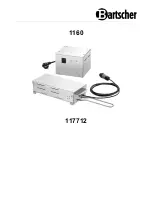
8
ROOM ACOUSTICS
Your Room
This is one of those areas that requires both a little background
to understand and some time and experimentation to obtain
the best performance from your system. Your room is actually
a component and an important part of your system. This com-
ponent is a very large variable and can dramatically add to, or
subtract from, a great musical experience.
All sound is composed of waves. Each note has its own wave
size, with the lower bass notes literally encompassing from 10’
feet to as much as 40’ feet. Your room participates in this wave
experience like a three dimensional pool with waves reflecting
and becoming enhanced depending on the size of the room
and the types of surfaces in the room.
Remember, your system can literally generate all of the infor-
mation required to recreate a musical event in time, space,
and tonal balance. Ideally, your room should not contribute
to that information. However, every room contributes to the
sound to some degree. Fortunately MartinLogan had designed
your speaker to minimize these anomalies
Let’s talk about a few important terms before we begin.
Terminology
Standing Waves
The parallel walls in your room will reinforce certain notes to
the point that they will sound louder than the rest of the audio
spectrum and cause “one note bass”, “boomy bass” or “bloat-
ed bass”. For instance, 100Hz represents a 10 feet wavelength.
Your room will reinforce that specific frequency if one of the
dominant dimensions is 10 feet. Large objects in the room
such as cabinetry or furniture can help to minimize this poten-
tial problem. Some serious “audiophiles” will literally build a
special room with no parallel walls just to help eliminate this
phenomenon.
Reflective Surfaces (near-field reflections)
The hard surfaces of your room, particularly if close to your
speaker system, will reflect some waves back into the room
over and over again, confusing the clarity and imaging of your
system. The smaller sound waves are mostly affected here, and
occur in the mid and high frequencies. This is where voice and
frequencies as high as the cymbals occur.
Resonant Surfaces and Objects
All of the surfaces and objects in your room are subject to
the frequencies generated by your system. Much like an
instrument, they will vibrate and “carry on” in syncopa-
tion with the music, and contribute in a negative way to the
music. Ringing, boominess, and even brightness can occur
simply because they are “singing along” with your music.
Resonant Cavities
Small alcoves or closet type areas in your room can be cham-
bers that create their own “standing waves” and can drum
their own “one note” sounds.
Clap your hands. Can you hear an instant echo respond back?
You have near-field reflections. Stomp your foot on the floor.
Can you hear a “boom”? You have standing waves or large
panel resonances such as a poorly supported wall. Put your
head in a small cavity area and talk loudly. Can you hear a
booming? You’ve just experienced a cavity resonance.
Rules of Thumb
Hard vs. Soft Surfaces
If the front or back wall of your listening room is soft, it might
benefit you to have a hard or reflective wall in opposition. The
ceiling and floor should follow the same basic guideline as
well. However, the side walls should be roughly the same in
order to deliver a focused image.
This rule suggests that a little reflection is good. As a matter of
fact, some rooms can be so “over damped” with carpeting,
drapes and sound absorbers that the music system can sound
dull and lifeless. On the other hand, rooms can be so hard that
the system can sound like a gymnasium with too much reflec-
tion and brightness. The point is that balance is the optimum
environment.
Breakup Objects
Objects with complex shapes, such as bookshelves, cabinetry
and multiple shaped walls can help break up those sonic grem-
lins and diffuse any dominant frequencies.
English
Содержание 839ESL9CH
Страница 1: ......
Страница 2: ......
Страница 3: ......
Страница 4: ...u s e r s m a n u a l m a n u e l d e l u t i l i s a t e u r...
Страница 7: ......
Страница 9: ......
Страница 10: ...15 38cm 59 8 152cm 0 10 4 26 4cm 9 3 23 6cm 34Hz 23kHz 3dB 78 lbs 35 4 kg 4 Ohms 90dB 2 83 V M...
Страница 11: ...6 2 15 8cm 4 4 11 3cm 7 6 19 2cm 25 1 63 7cm 25 4 64 6cm 0 5 0 0...
Страница 12: ...2x x 8 20cm 24 61cm x...
Страница 13: ......
Страница 14: ...Classic ESL 9 50 400W 4 Ohms...
Страница 15: ......
Страница 16: ...u s e r s m a n u a l English...
Страница 17: ...42...
Страница 23: ...6 English 2x x 8 20cm 24 61cm x Final placement...
Страница 24: ...7 Flashlight toe in technique English...
Страница 41: ......
















































